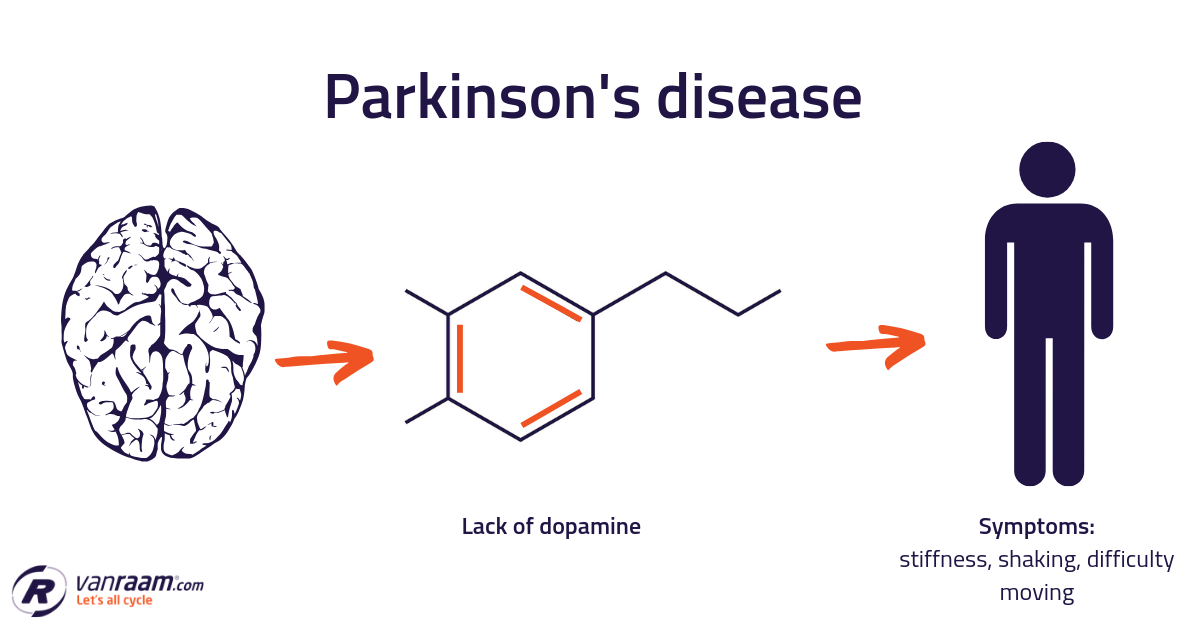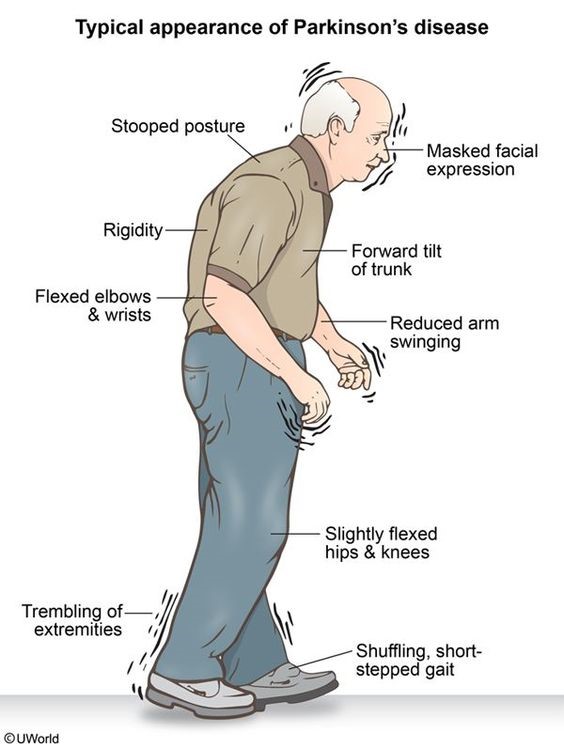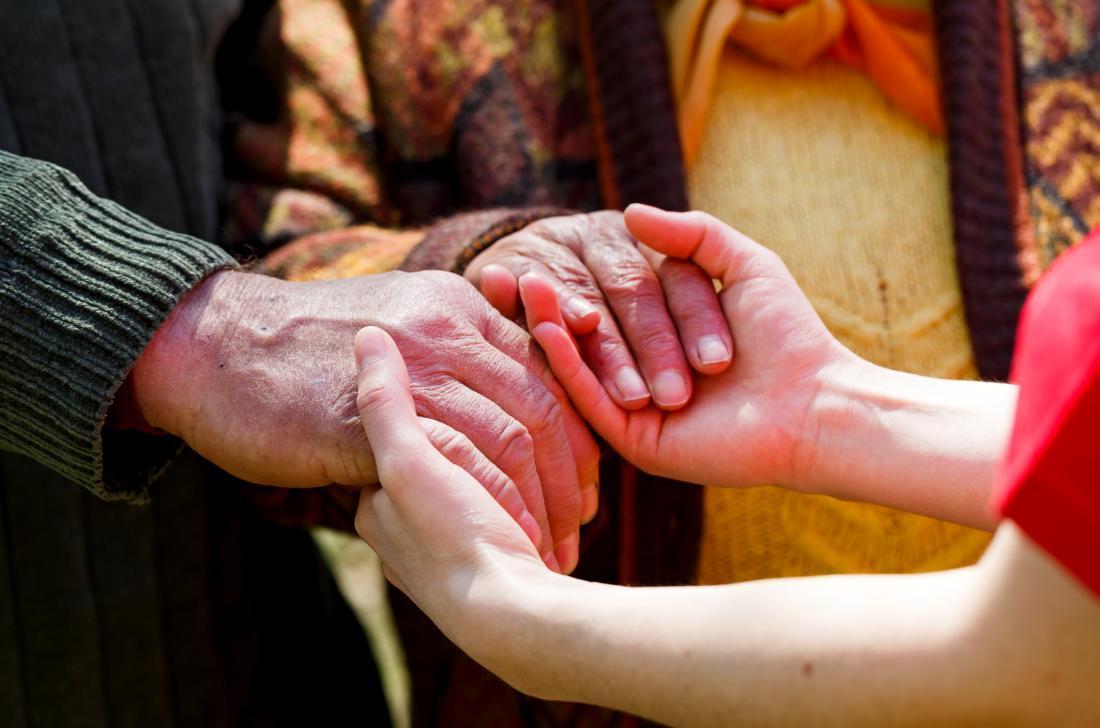Parkinson's Disease: The Challenge of Life
You might have encountered this scene before: An old man trying to control holding a spoon with his shaky hand. What’s wrong with him? He may be suffering from a disease called ‘Parkinson’s disease’.
If you or your family members have just been diagnosed with Parkinson’s disease, you may probably feel worried and confused while in a state of denial. The best way to overcome these negative feelings is to be well-informed about this disease which may facilitate disease management.
What is Parkinson's disease?
Parkinson’s disease is a neurological disorder which involves the death of nerve cells in the brain that are responsible for the production of a chemical substance called dopamine. Dopamine is important in controlling movement therefore the lack of dopamine will lead to muscle rigidity, tremors, and changes in speech and gait as seen in Parkinson’s disease.

Why does Parkinson's disease occur?
The exact cause for Parkinson’s disease is still unknown, but it is thought to be due to a combination of genetic and environmental factors. However, Parkinson’s disease is not inherited in most cases.
When does Parkinson's disease occur?
Parkinson’s disease occurs most commonly amongst older people in their 60’s or above (approximately 1% of population over age of 60). Nevertheless, it can affect people at all ages, even those in their teen. Interestingly, it is slightly more common in men than in women.
What are the symptoms of Parkinson's disease?
Parkinson’s disease progresses slowly. Different patients may manifest different symptoms and the rate of progress may also vary. Classical symptoms of Parkinson’s disease include, are movement-related symptoms such as shakes (or tremor), muscle stiffness, slowness in initiating movement and taking small shuffling steps when walking.
In the other words, people living with Parkinson’s disease can have pronounced difficulty in controlling their movement. They need longer time to complete their daily activities or tasks, such as eating, walking and getting dressed. In later stages of Parkinson’s disease, they may experience other symptoms, including difficulty in maintaining their balance which increases the risks of falls. They may also ‘freeze’ suddenly when moving and eventually their daily activities will be restricted.
In addition to difficulties with movement, patients with Parkinson’s disease may have other symptoms which are unrelated to movement (i.e. non-motor symptoms) which include tiredness, pain, constipation, depression, anxiety, slowness in thought, difficulty in concentrating and sleep disturbances. These symptoms can have a great implication on the quality of life among patients with Parkinson’s disease.
If you or your family member experience these symptoms, kindly consult your doctor for a proper diagnosis. A careful examination by a doctor is needed to diagnose this disease.

What treatments are available for Parkinson's disease?
Although there is no cure for Parkinson’s disease, a range of treatments are available to manage the symptoms. Medication(s) can help patients with Parkinson’s disease by relieving them of motor symptoms. In addition to drug therapy, physiotherapy, speech therapy and occupational therapy are often beneficial for these patients.
Although Parkinson’s disease may restrict one’s daily activities, it should not stop them from living a quality life. There are numerous celebrities, who are (or were) diagnosed with Parkinson’s disease, including actor Michael J. Fox, Robin Williams and boxer Muhammad Ali. These are role-models known for their steadfast battle with Parkinson’s disease. This indicates that patients with Parkinson’s disease can lead active and fulfilling lives through positive attitude and proper medical treatment. Always remember, Parkinson’s disease would not be able to beat you unless you allow it to!

Image credit:
- https://www.diabetes.co.uk/wp-content/uploads/2019/01/Parkinsons-Disease.png
- https://i.makeagif.com/media/5-24-2016/-TmLNv.gif
- https://www.vanraam.com/getmedia/3078b293-12dd-4a5b-8bdf-028ee835bdcc/Cycling-with-Parkinson-s-disease-with-Van-Raam-special-needs-bicycles.png
- https://i0.wp.com/medtrend.org/wp-content/uploads/2018/05/download-24.jpg?resize=276%2C367&ssl=1
- https://i0.wp.com/cdn-prod.medicalnewstoday.com/content/images/articles/323/323396/tremor-in-one-hand-is-a-early-sign.jpg?w=1155&h=1528
References:
1. Movement Disorders Council, Malaysian Society of Neurosciences. 2012 Consensus Guidelines for the Treatment of Parkinson’s Disease. 2012. Available at: http://www.neuro.org.my
2. Malaysian Parkinson’s Disease Association. Available at: http://www.mpda.org.my/
In collaboration with Dosing Health








